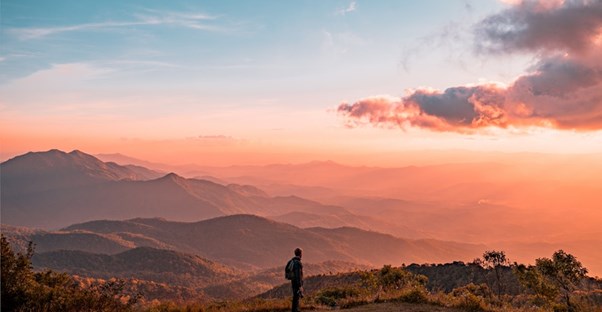Mount Rainier National Park, Washington
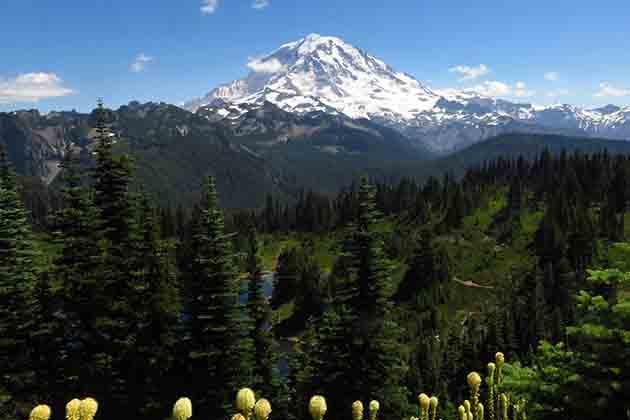
If volcanoes are your thing, then Mount Rainier is the place to go. It’s close enough to Mount St. Helen that you can see it from the rim of St. Helen’s crater. Rainier is a massive volcano located south and south-east of Seattle. It’s considered to be one of the most dangerous volcanoes in the world, posing a serious threat to Seattle. If you’re looking to see lava, though, this is not the place for you. It hasn’t erupted in over 1,000 years.
Badlands National Park, South Dakota

Despite the name, the Badlands actually makes for a good vacation. The textured terrain would have made it extremely hard for people to inhabit, but they’re perfect for visiting. While you’re there, keep an eye out for endangered species, like the black footed ferret, or for fossils of animals long past their heyday. There are a lot of fossils found here, so you might be lucky enough to discover a dinosaur that you get to name. Dances with Wolves was also partially filmed here, so if you’re a fan of the movie, keep your eyes peeled for set locations.
Yellowstone, Wyoming
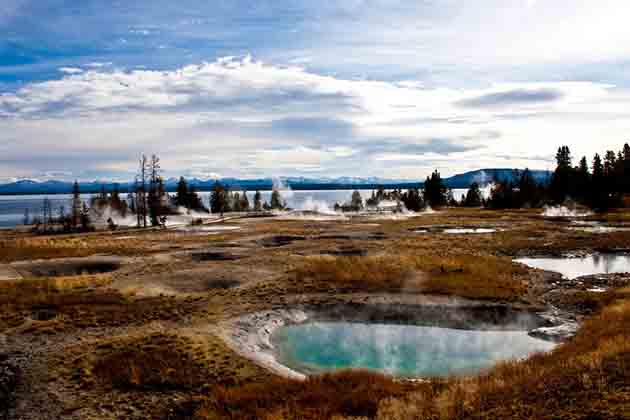
Yellowstone is America’s, and debatably the world’s, oldest national park. It’s been around for almost 150 years and receives more annual visitors than live in the state of Oregon. There’s a reason it’s so popular, though. The millions of acres the land covers provides some of the most remote experiences you can find in the states. The land is populated by rivers and canyons, waterfalls and geysers, along with plenty of endangered animals. Most notably, it’s home to Old Faithful, the massive geyser that erupts every 45 to 125 minutes. If you get the chance, give it a visit.
Glacier National Park, Montana

You probably grew up hearing about how some places geographical features are the results of glaciers carving through the land. (The great lakes are a perfect example.) Most of those glaciers are gone now, but Glacier National Park still has 25 active glaciers. That’s significantly less than the 150 glaciers that were there in 1850, and scientists estimate that the glaciers will be gone by 2030. Visit it while you can. After all, Nat Geo considers it one of the world’s most spectacular drives.
Zion National Park, Utah
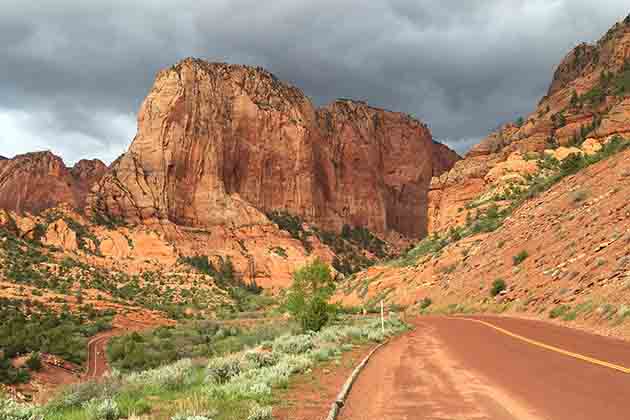
With a name like “Zion,” you know this park has big shoes to fill. This park lives up to its name, though. Sitting in Utah, this park is the epitome of desert beauty. There are canyons, plateaus, rivers, and waterfalls. Some of the cliffs are 2,000 feet tall, making for a breathtaking view. It’s truly a place that will make you stop in awe.
Crater Lake National Park, Oregon
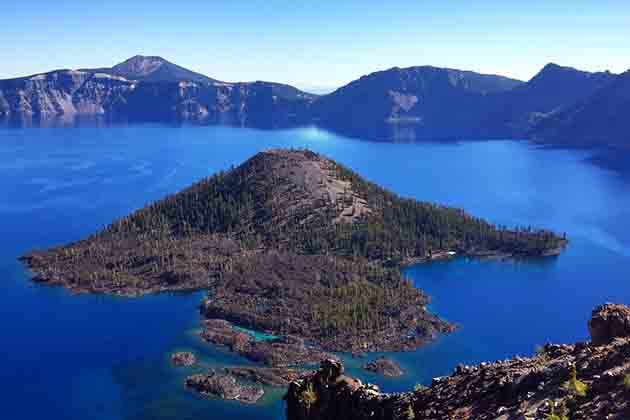
Crater Lake was once a volcano. That volcano had too good of a time, though, and during a really big eruption, it collapsed in on itself. This formed a breathtaking lake that just looks like it used to be a volcano. It’s also the deepest lake in America and one of the deepest in the World. While we don’t recommend swimming to the bottom, we do recommend making the trip.
Acadia National Park, Maine

Grand Canyon
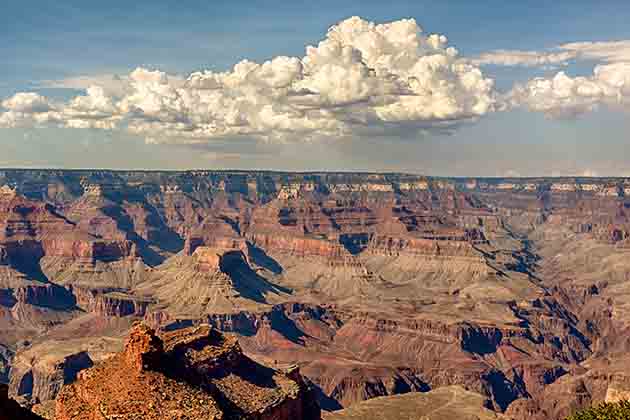
We all grew up admiring the Grand Canyon. Well, at least we did from afar. It’s one of America’s favorite landmarks, so we’ve seen it on everything from postcards to textbook covers. You’ve probably seen pictures of it so many times that if you haven’t actually been there, you probably just assumed that the pictures were as good as they got. If that’s you, you couldn’t be more wrong. This near-300-mile canyon is almost a mile deep. There’s no way a picture can do it justice.
Olympic National Park, Washington State

Olympic National Park is a breathtaking wilderness. There are three distinct ecosystems found in this one park, including a temperate rainforest and mountains with glaciers on them. These mountains block the peninsula that the park is on from the mainland, protecting the park. There are almost 60 miles of coastline, most of which is untouched by humans. Few people venture more than a few miles down the coast, and even less go into the mountains. If you’re looking for isolated wilderness, this is the place for you.
Rocky Mountain National Park, Colorado

If you want to make for a difficult packing experience, go to the Rockies. They’re so tall that you can wear a T-Shirt at the bottom while walking in snow at the top. The highest paved road in the nation runs through the park at a height of almost 2.5 miles, and that’s not even the highest point in the park. They’re so big you can’t fathom them. When you’re driving to them, you’ll see them hours before you get there. It’s an experience that you won’t forget.
Great Smoky Mountains, TN & NC

The Great Smoky Mountains are actually the most popular mountains in the nation. While they’re not as tall as the Rockies, they draw almost twice as many visitors any other national park. But don’t let that dissuade you from going! With over 800 miles of hiking trails, you’ll be able to find whatever level of privacy you want.
Yosemite, California
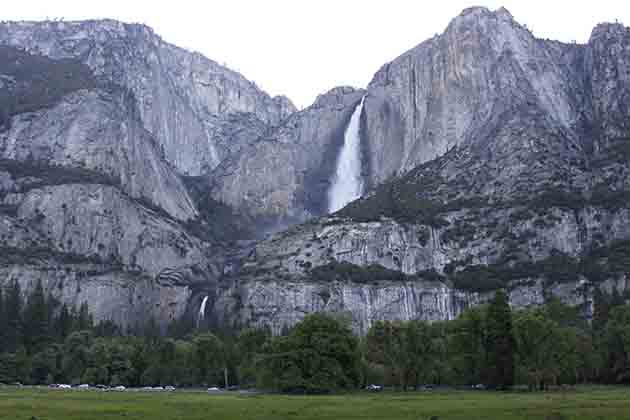
If you are ever making a movie and need a refuge for the good guys after a long, difficult journey, Yosemite is your place. It’s so beautiful that it looks like it can’t be real. It could only possibly be movie magic. We of course know that’s not true, but it just goes to show the place’s majesty. The park covers over a million square miles but is approachable to people of any level of athleticism.
Grand Teton National Park, Wyoming
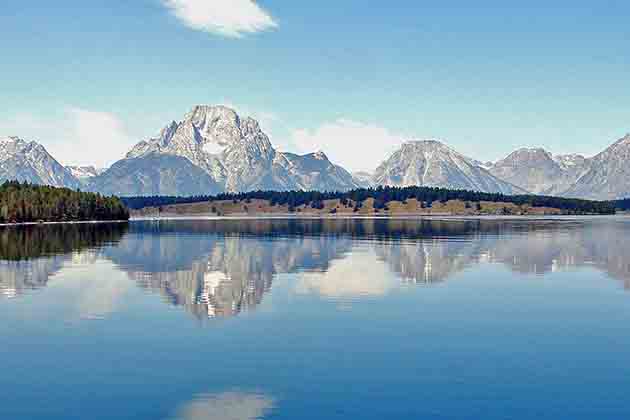
Grand Teton, located just 10 miles from Yellowstone, is named after the near 14,000 mountain Grand Teton. Its ecosystem is so well-preserved that the majority of flora and fauna there are believed to be the same that were there in prehistoric times. If you want to see a completely undisturbed natural beauty, this is the park to visit.
Redwood National Parks, California
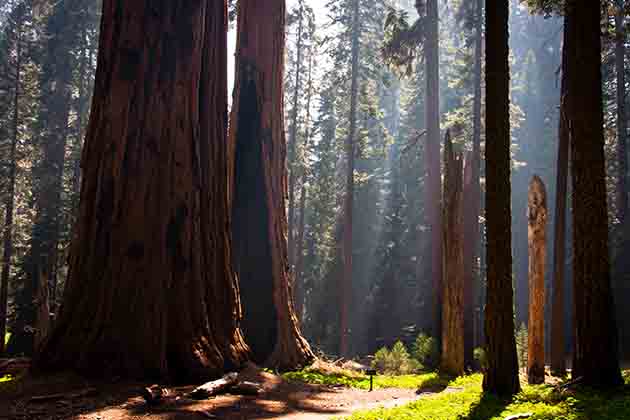
If you don’t want to visit canyons, mountains, or lakes, visit the Redwoods. They’ll still remind you just how small we really are. They are hundreds of feet tall, and some in the past are believed to have reached the maximum height for trees, which is over 400 feet tall. These are the tallest trees you’ll ever find, so if you can see them in person, do it. Pictures don’t do it justice.
Everglades National Park, Florida
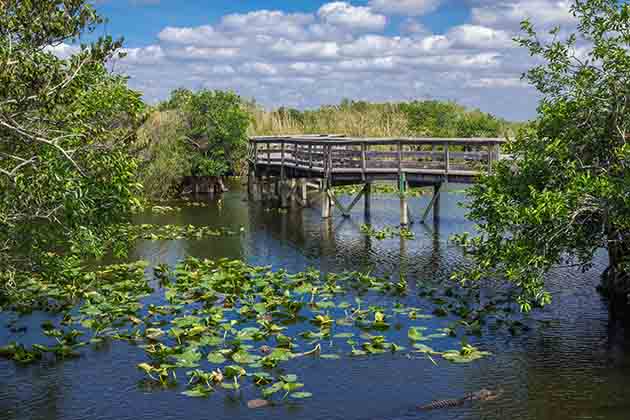
Sequoia National Park, California

Sequoia National Park is something you must witness firsthand. Not only is Sequoia home to the biggest tree in the world, it’s home to half the planets largest and longest-living trees. Some of the trees are towering over 300 feet high. Can you imagine the beauty? Be prepared to get your steps in when visiting Sequoia National Park. Most of the park is not accessible by car, only on foot or horseback. But trust us, every step is worth it.
Death Valley National Park, California
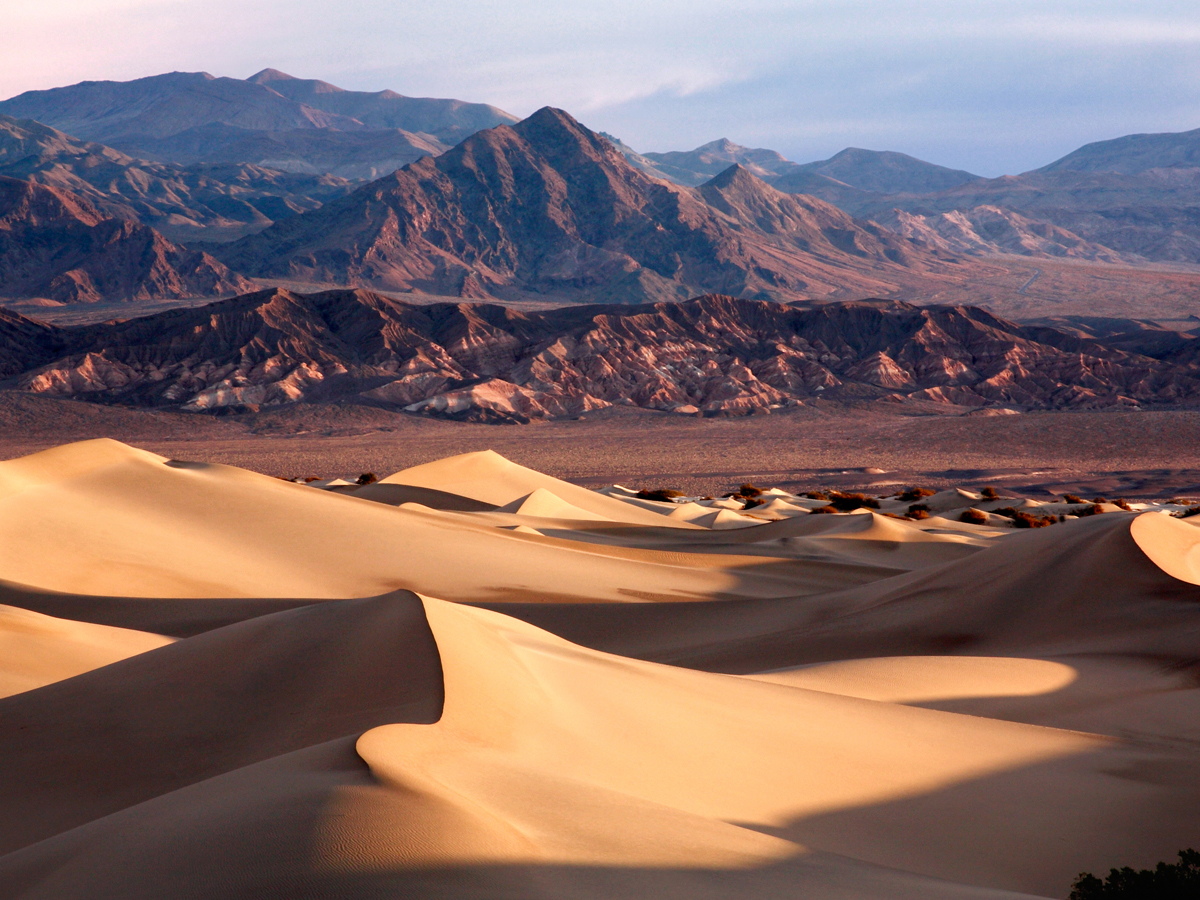
Death Valley National Park is the a land of extremes. It's the hottest, driest, lowest, and largest national park in the lower 48 states. This national park offers more than just the scorching hot desert though. Snow lies on the towering mountain peaks and there are lush wildflower meadows. Make sure to drive up to Zabriskie Point, where you can see some of the most magnificent rock formations in California.
Archest National Park, Utah

Arches National Park is known as one of the most beautiful desert landscapes in the United States. For those who enjoy truly scenic drives, take the Arches Scenic Drive. Trust us, it's one of the most fascinating roads in Utah and it cuts through the middle of the park! Arches National Park contains over 2,000 sandstone arches, which took millions of years to form. The most famous arches are Delicate Arch, Landscape Arch, and Balanced Rock, so be sure to visit those.
Joshua Tree National Park, California

You guessed it! Joshua Tree National Park is named after and famous for its Joshua Trees. It's located to the east of Los Angeles, and has a beauiful desert landscape. Joshua Tree National Park is part of the Mojave and Colorado Deserts. Some of the most popular activities at Joshua Tree National Park include hiking, astronomy, and bird watching. The park is home also to over 500 archaelogical sites.
Bryce Canyon National Park, Utah
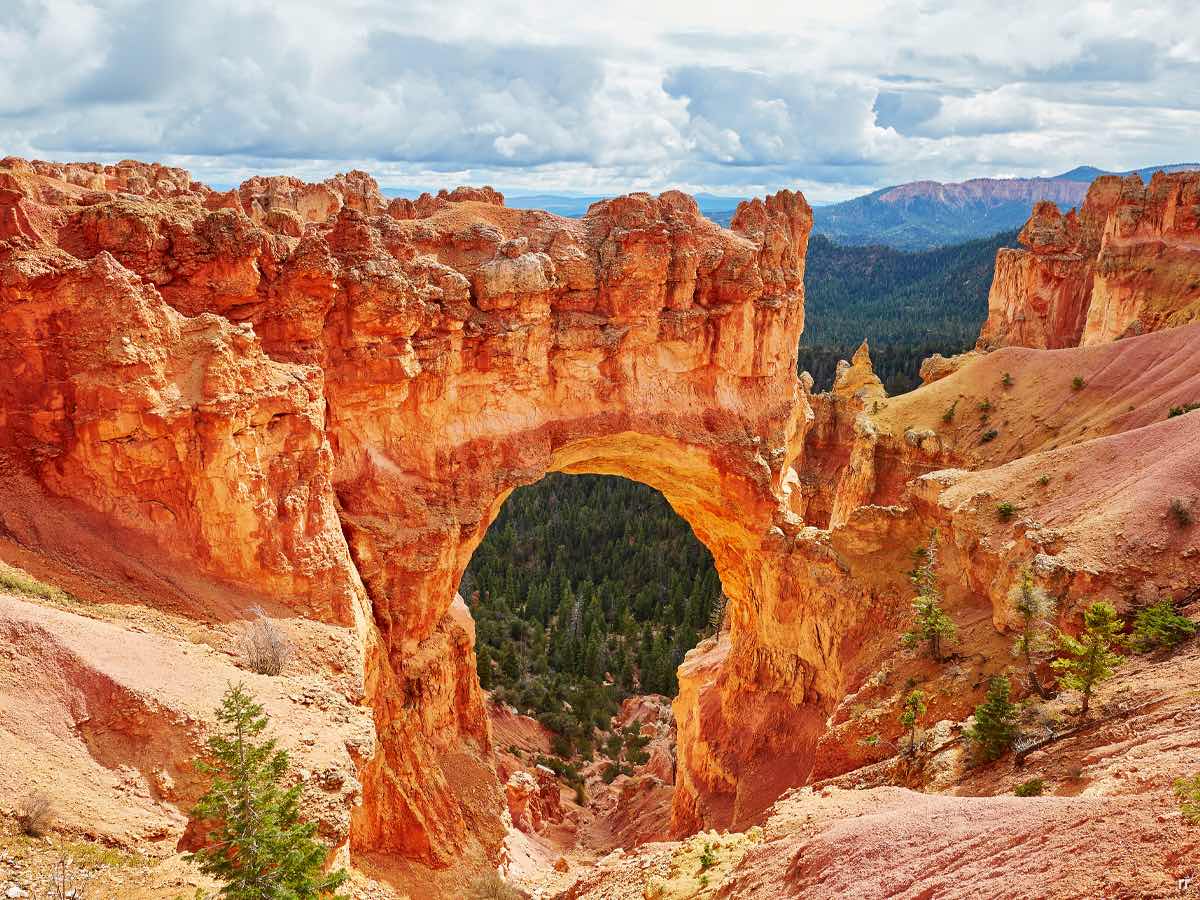
Utah has several national parks, and Bryce Canyon is one of the most popular – after Zion National Park, of course. Bryce Canyon is famous for its naturally formed amphitheaters and stone pillars, called hoodoos. Bryce Canyon is seriously one-of-a-kind. You can enjoy over 100 species of birds, more than 1,000 plant species, and many different kinds of mammals. One piece of advice: get up at the crack of dawn and catch the sunrise.
Hawaii Volcanoes National Park, Hawaii
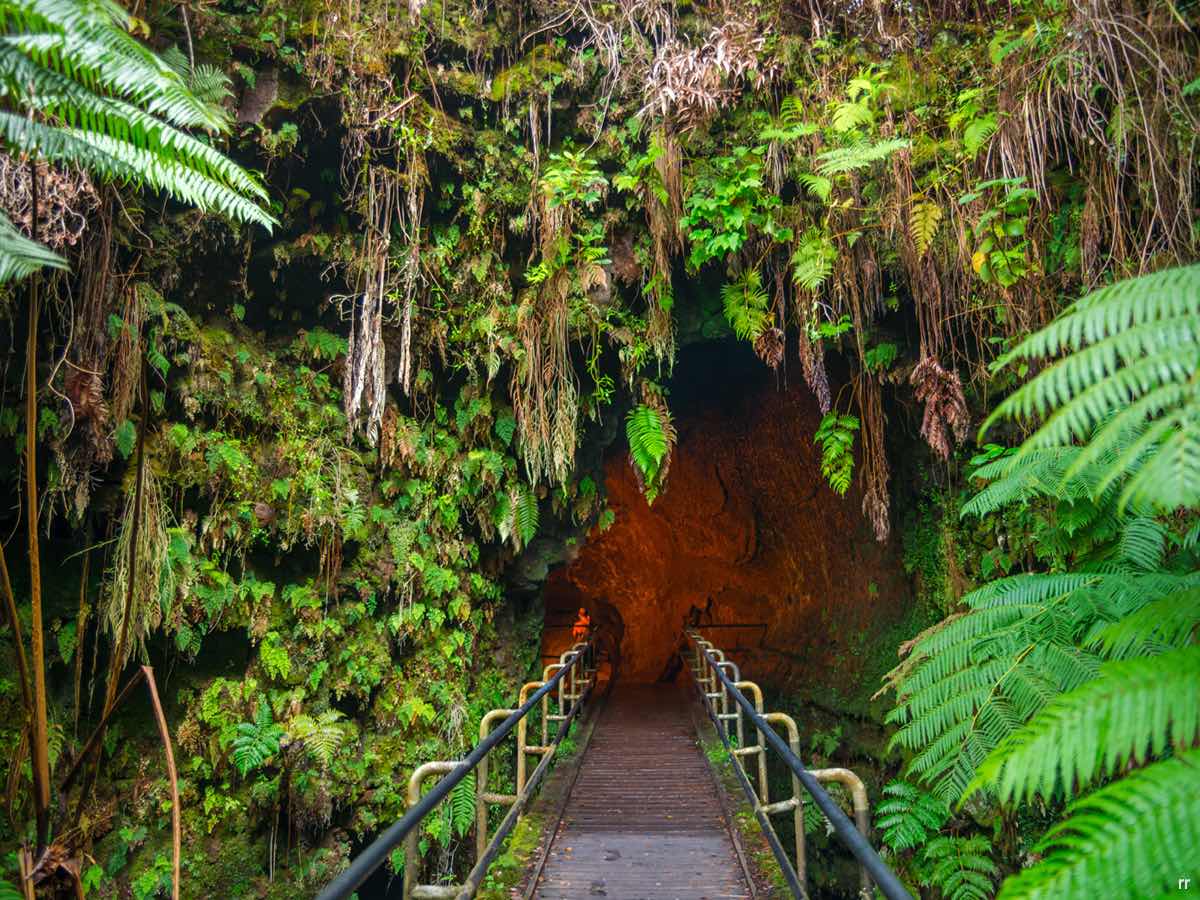
If you ever make the trip to Hawaii, make sure you visit Hawaii Volcanoes National Park on the Big Island. Visitors can view two active volcanoes, including the world's largest volcano! Take a drive around Crater Rim or hike through Mauna Loa Backcountry. It's best to visit the park in the spring or the fall because the weather will be perfect and it will be less crowded.
Indiana Dunes National Park, Indiana

Indiana Dunes National Park was deemed a national park in February 2019. The park was originially called Indiana Dunes National Lakeshore. Indiana Dunes hugs the southern shore of Lake Michigan. You can enjoy the woods, beaches, prairies, and marshy wetlands. According to Thrillist, it's one of the most biodiverse places in the country.
Haleakala National Park, Hawaii
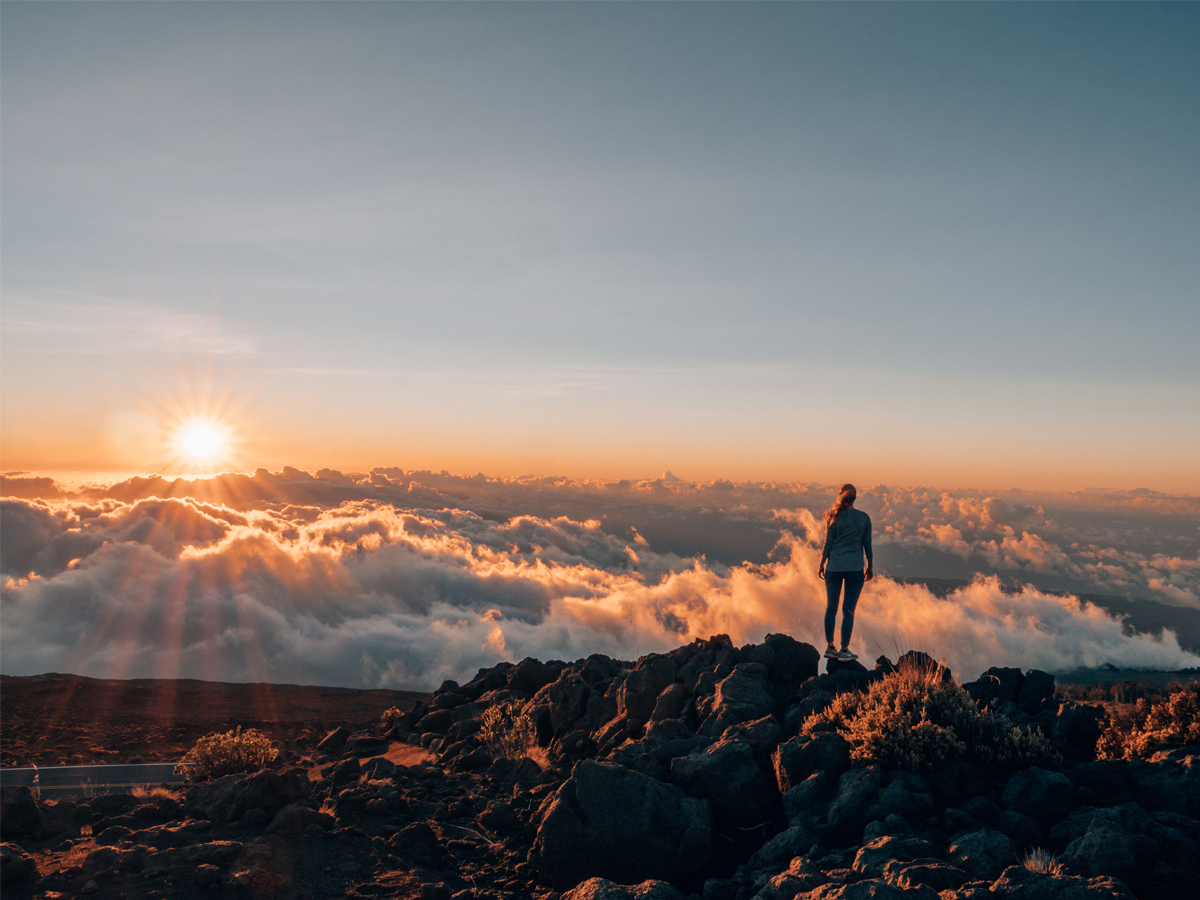
Haleakala National Park is certainly for the outdoorsy people. Haleakala is probably one of the best places on the planet to enjoy a scenic bike ride at sunrise. You can also take a challenging climb into an active volcano! Though swimming isn't recommended, Haleakala is home to several beautiful freshwater pools. Take a walk through bamboo forests, or enjoy searching for endangered species. Haleakala is known to have more endangered species than any other national park in the United Sates.
Hot Springs National Park, Arkansas

Hot Springs National Park is another national park that is on the small side, but it’s still pretty cool. This national park is credited as the United States' oldest national park – yes, it even predates Yellowstone! Although you can’t bathe in the hot, natural springs, you can visit one of the several bath houses in downtown Hot Springs. Hot Springs is on the must-see list when you visit Arkansas!
Capitol Reef National Park, Utah
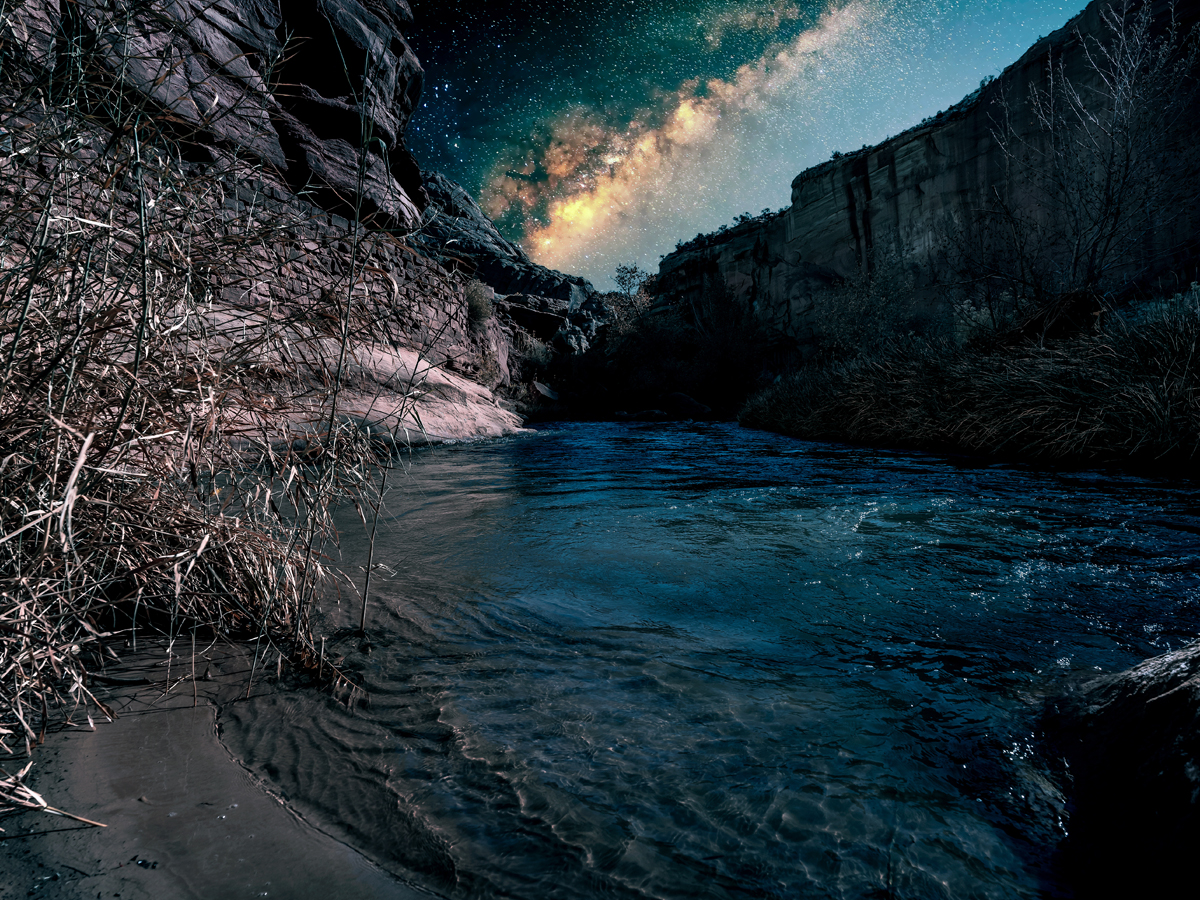
Capitol Reef National Park is a paradise for both rock climbers and geologists. Utah is home to 13 national parks, but Capitol Reef is certainly one of the best. Nothing beats the beautiful cliff formations, the wildlife, or the unique views. Capitol Reef is known for the Waterpocket Fold, a 100-mile long buckle in the Earth's crust. Other sites such as Cassidy Arch Trail, Burr Trail, Cathedral Valley and Freemont River Waterfall attract visitors to this national park year-round.
Shenandoah National Park, Virginia
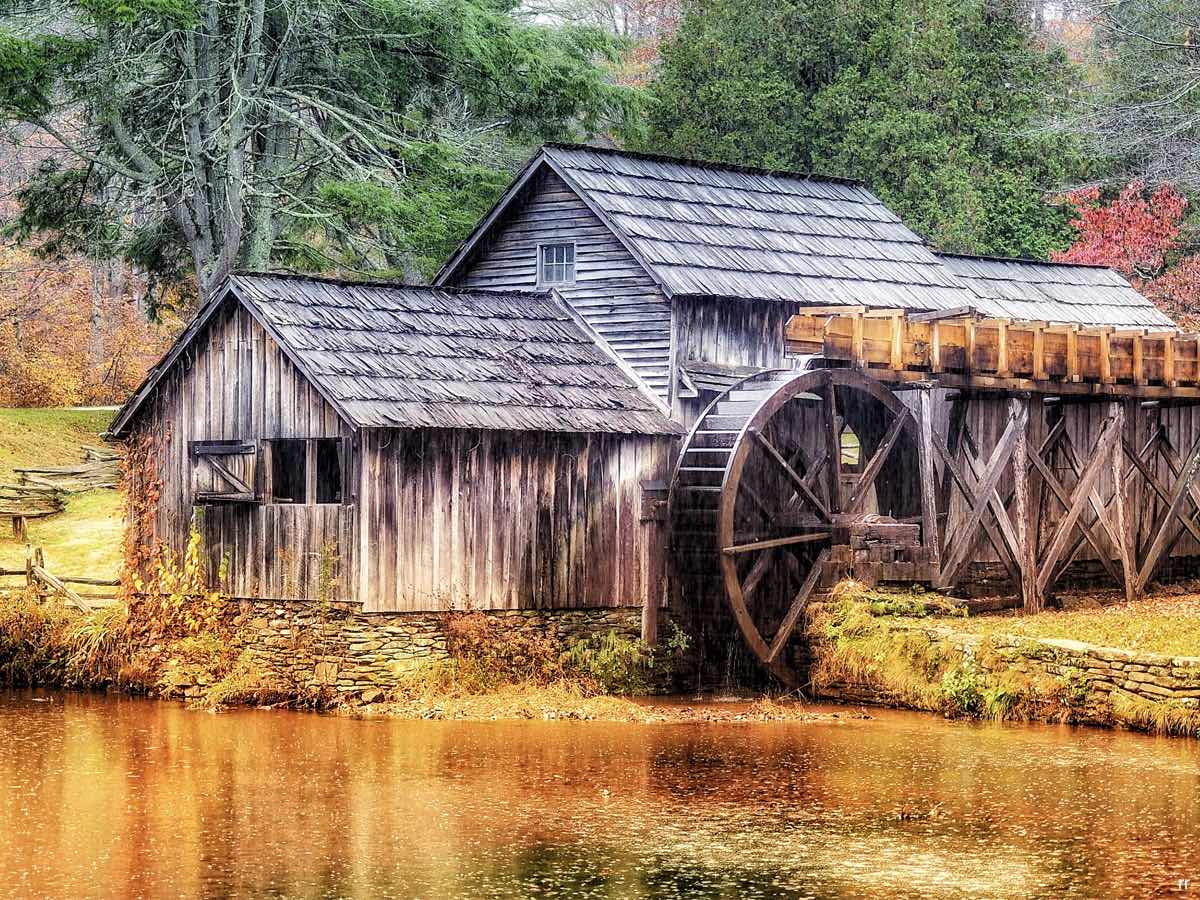
Shenandoah National Park extends along the Blue Ridge Mountains in Virginia. The park is best known for Skyline Drive, a scenic 105-mile road that runs along the ridge of the mountains. With over 500 miles of trails, there are endless options for the nature and scenery you can explore in Shenandoah National Park. Hike a section of the Appalachian trail, enjoy birdwatching, or explore the gorgeous waterfalls at this park.
Cuyahoga National Park, Ohio

Cuyahoga Valley National Park is a mix of natural and manmade attractions, helping the park stand out among other famous parks. Located in rural Ohio, the park seems worlds away. The park is a refuge for wildlife and native plants. Brandywine Falls, a 65-foot tall waterfall is a must-see at Cuyahoga Valley. Other activities include biking, horseback riding, kayaking, and of course hiking.
Gateway Arch National Park, Missouri

The Gateway Arch is definitely one of the first things people think of when they visit St. Louis. The arch was originally recognized as a national monument, but when it was renovated back in 2018 it was changed to a national park. The Gateway Arch National Park represents the modernization of St. Louis that blends the urban world with the natural world. The park may seem a bit underwhelming at first because it’s extremely small, but it’s still worth a visit.
Big Bend National Park, Texas
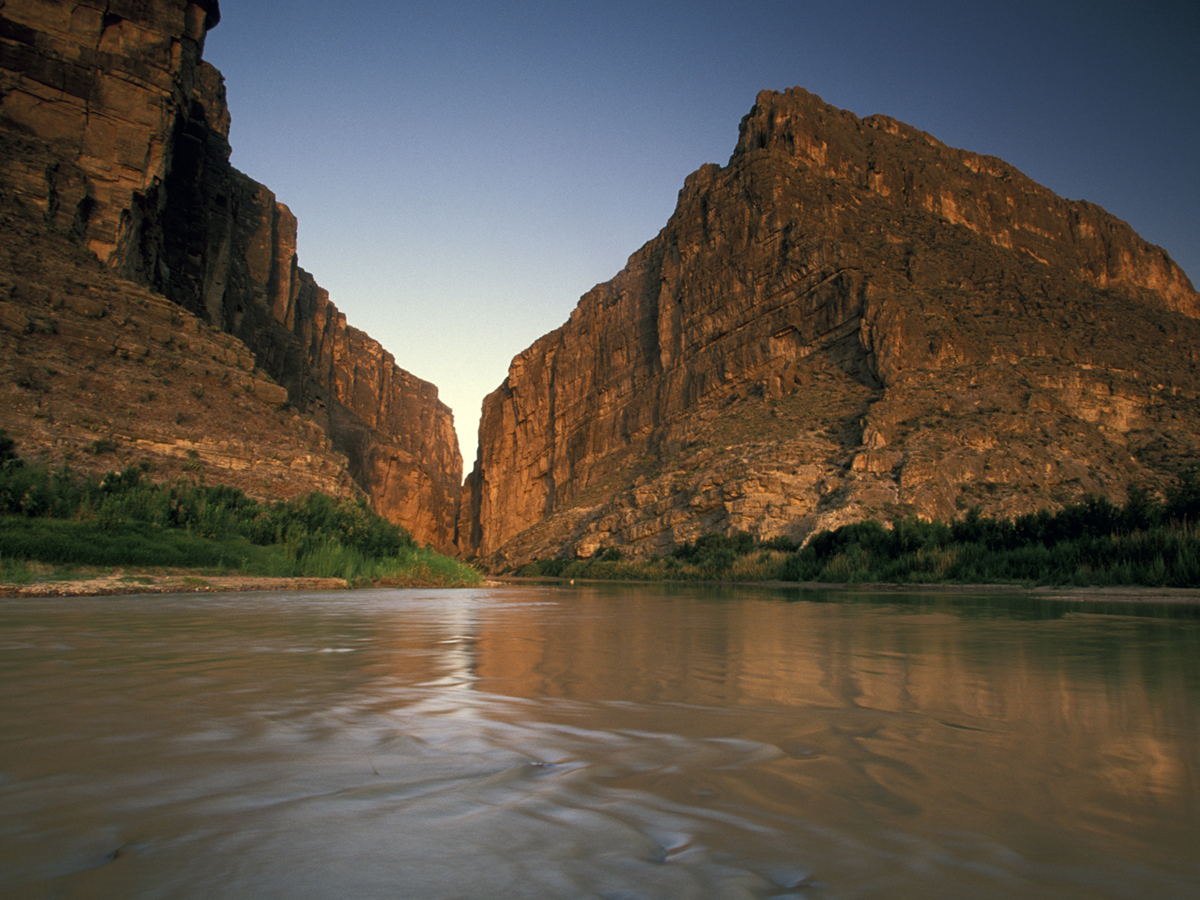
Big Bend National Park in Texas is a great place to experience the mighty Rio Grande, but that's not the only thing that makes this park a must visit. There's also plenty of backpacking and hiking to be had, and, if you're lucky, you might just spot a dinosaur bone--fossils have frequently been found in the area. This is also one of America's least-visited national parks, which means that crowds probably won't be a problem at any time of year.
Biscayne National Park, Florida
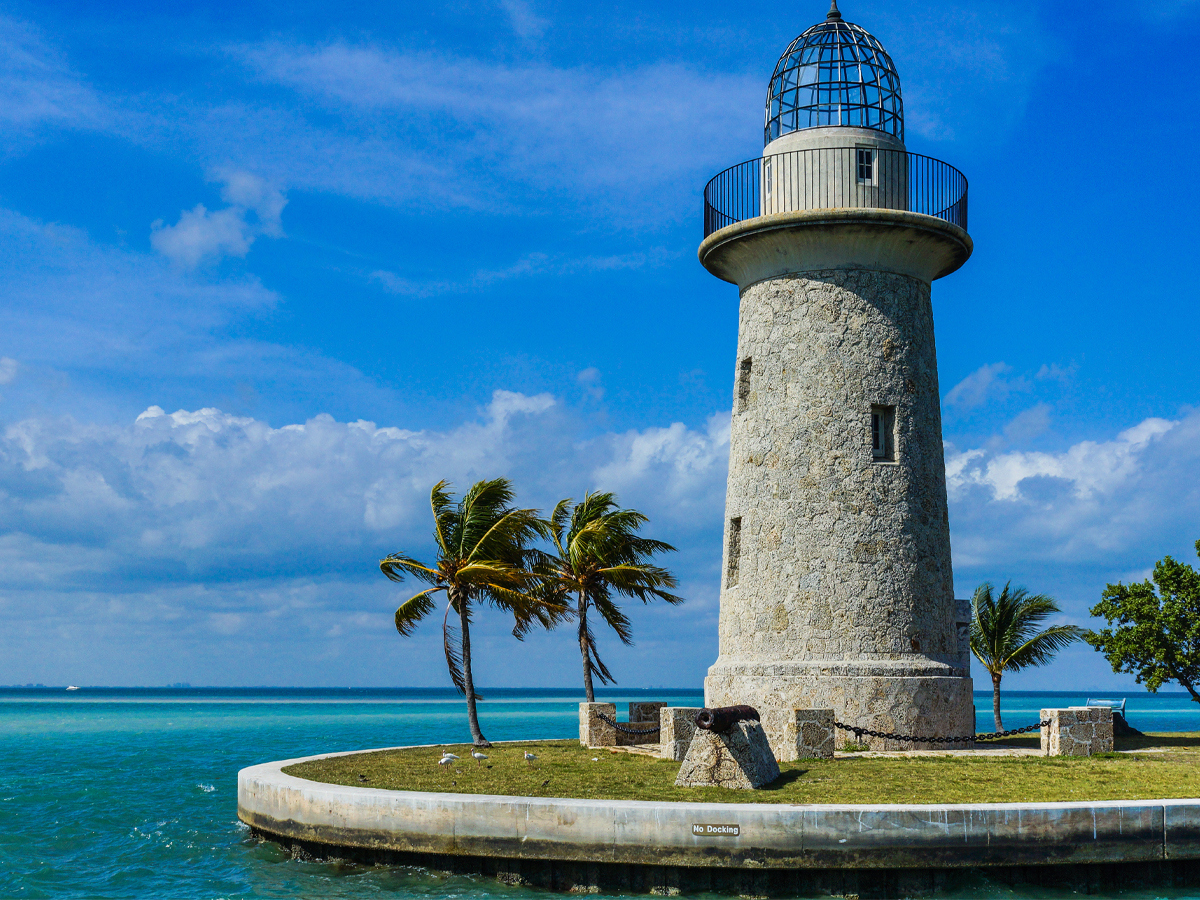
There are plenty of national parks across the country that house some truly beautiful landscapes, but if you're more of a water person, then Biscayne National Park in Florida is where you want to be. Biscayne Bay makes up 95% of the area of the park, which is home to the Florida Reef--one of the largest coral formations in the world. Snorkeling is obviously a big activity in the park, and you can even camp there...assuming that you have a boat to shuttle you to the campground!
 Author
Ron Winkler
Last Updated: November 03, 2023
Author
Ron Winkler
Last Updated: November 03, 2023
